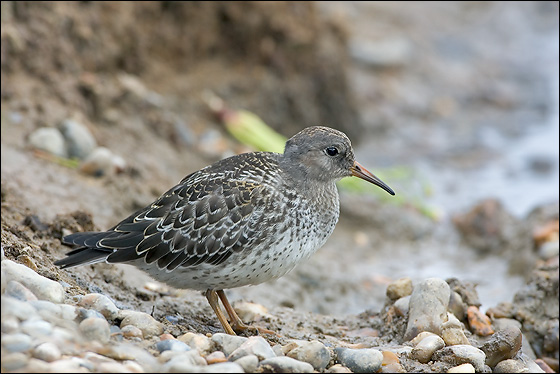Purple Sandpiper (Calidris maritima)
There is nothing particularly unusual about where the Purple Sandpiper breeds. In common with many waders, it is primarily found on Arctic and sub-Arctic tundra, as well as on beaches and islands. Where it winters, though, is unusual. It does not travel far, only to rocky shores and man-made coastal artefacts within and to the south of its breeding range. Here, among the wave-lashed rocks and seaweed it has little competition with other waders except for the Turnstone, and thrives. While the rest probe into the mud, the Purple Sandpiper examines rock fissures and beds of seaweed for hard-shelled molluscs, crustaceans and a few worms. It also, unusually for a wader, ingests significant amounts of the algae themselves. The Purple Sandpiper has several adaptations for its littoral lifestyle: a strong but slightly decurved bill, a large muscular stomach to grind down shells, and an ability to swim should it be caught by the waves.
The two sexes divide incubation equally between them, but as soon as the eggs hatch the female deserts and leaves the brood in the studious care of the male. Both give their all to nest protection when on duty, and include in their armoury some remarkable distraction displays to deflect predators. The most famous is the “Rodent Run” in which the bird literally pretends to be a lemming or similar and runs along low to the ground, making rodent-like squeaks. Beguiled by easy food the predator follows this new trail, away from the nest, and must be extremely surprised when, at a safe distance, the “rodent” takes off and flies away!
The two sexes divide incubation equally between them, but as soon as the eggs hatch the female deserts and leaves the brood in the studious care of the male. Both give their all to nest protection when on duty, and include in their armoury some remarkable distraction displays to deflect predators. The most famous is the “Rodent Run” in which the bird literally pretends to be a lemming or similar and runs along low to the ground, making rodent-like squeaks. Beguiled by easy food the predator follows this new trail, away from the nest, and must be extremely surprised when, at a safe distance, the “rodent” takes off and flies away!

